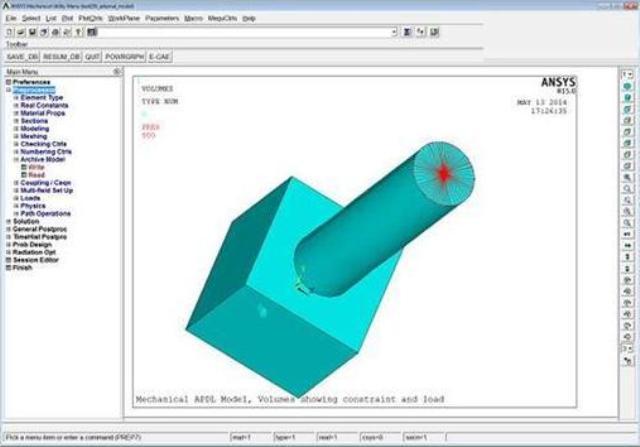

دانلود پاورپوینت “ Business model of open source software ”در 63 اسلاید به زبان انگلیسی
دانلود پاورپوینت “ Business model of open source software ” به زبان انگلیسی


دانلود پاورپوینت “ Business model of open source software ”در 63 اسلاید به زبان انگلیسی


در این مقاله به بررسی یک مدل خاص که بارها و قیود در شرایط استاتیک در محیط APDL به آن اعمال شده است، پرداخته و نحوه انتقال آن توضیح داده می شود. مدل مذکور در شکل زیر به تصویر کشیده شده است:

مقاله به کارگیری External Model برای استفاده از یک مدل APDL در محیط Ansys Workbench ، مشتمل بر 9 صفحه، به زبان فارسی، تایپ شده، به همراه تصاویر، فرمول ها و روابط ریاضی با فرمت word، گردآوری شده است.

جهت خرید مقاله به کارگیری External Model برای استفاده از یک مدل APDL در محیط Ansys Workbench به مبلغ فقط 2000 تومان و دانلود آن بر لینک پرداخت و دانلود در پنجره زیر کلیک نمایید.
!!لطفا قبل از خرید از فرشگاه اینترنتی کتیا طراح برتر قیمت محصولات ما را با سایر فروشگاه ها و محصولات آن ها مقایسه نمایید!!
!!!تخفیف ویژه برای کاربران ویژه!!!
با خرید حداقل 10000 (ده هزارتومان) از محصولات فروشگاه اینترنتی کتیا طراح برتر برای شما کد تخفیف ارسال خواهد شد. با داشتن این کد از این پس می توانید سایر محصولات فروشگاه را با 20% تخفیف خریداری نمایید. کافی است پس از انجام 10000 تومان خرید موفق عبارت درخواست کد تخفیف و ایمیل که موقع خرید ثبت نمودید را به شماره موبایل 09365876274 ارسال نمایید. همکاران ما پس از بررسی درخواست، کد تخفیف را به شماره شما پیامک خواهند نمود.




ژورنال:Information & Management
سال:November 2015
قیمت اصلی:35.95$
All six theoretical models have good explanatory power of behavioral intention (BI).
Based on variance explanation, the motivational model (MM) and the technology acceptance model (TAM) have stronger explanatory powers.
The theory of planned behavior (TPB) and the TAM have larger effect size compared to other theories.
Perceived usefulness (PU), attitude (ATT), cloud service quality (CSQ), perceived behavior control (PBC), result demonstration (RD), visibility (VIS), and cloud self-efficacy (CSE) are important factors of a unified model.
Cloud computing is an innovative information technology that has been applied to education and has facilitated the development of cloud computing classrooms; however, student behavioral intention (BI) toward cloud computing remains unclear. Most researchers have evaluated, integrated, or compared only few theories to examine user BI. In this study, we tested, compared, and unified six well-known theories, namely service quality (SQ), self-efficacy (SE), the motivational model (MM), the technology acceptance model (TAM), the theory of reasoned action or theory of planned behavior (TRA/TPB), and innovation diffusion theory (IDT), in the context of cloud computing classrooms. This empirical study was conducted using an online survey. The data collected from the samples (n = 478) were analyzed using structural equation modeling. We independently analyzed each theory, by formulating a united model. The analysis yielded three valuable findings. First, all six theoretical models and the united model exhibited adequate explanatory power. Second, variance explanation, Chi-squared statistics, effect size, and predictive relevance results revealed the ranking importance of the theoretical models. Third, the united model provided a comprehensive understanding of the factors that significantly affect the college students’ BI toward a cloud computing classroom. The discussions and implications of this study are critical for researchers and practitioners.